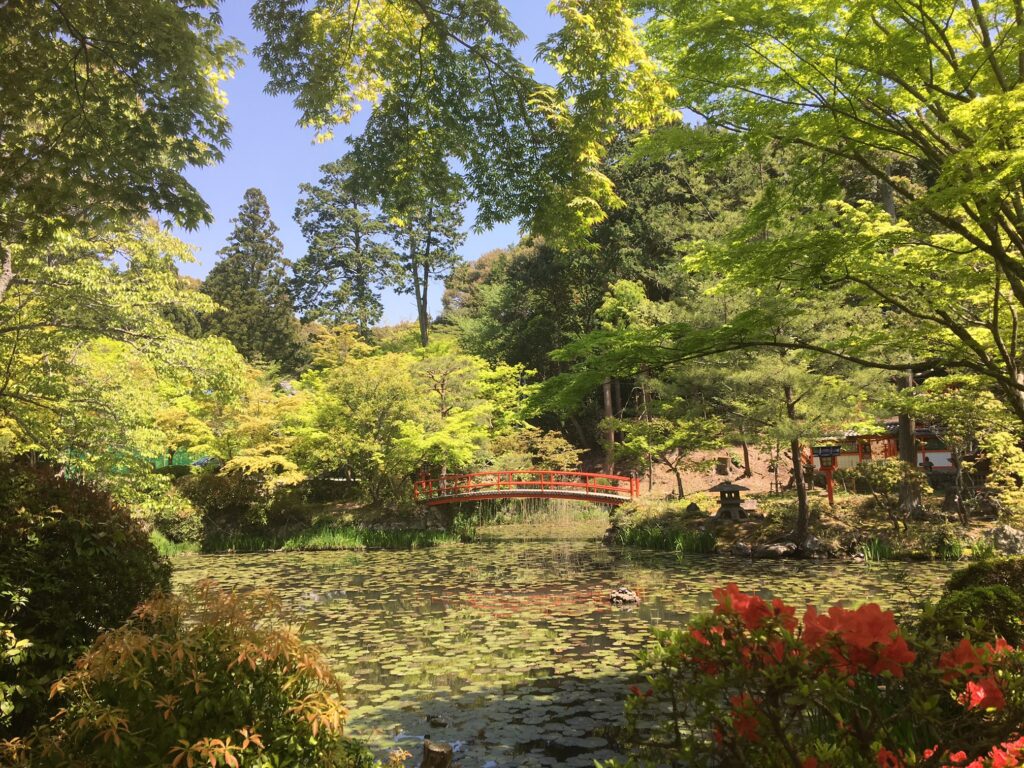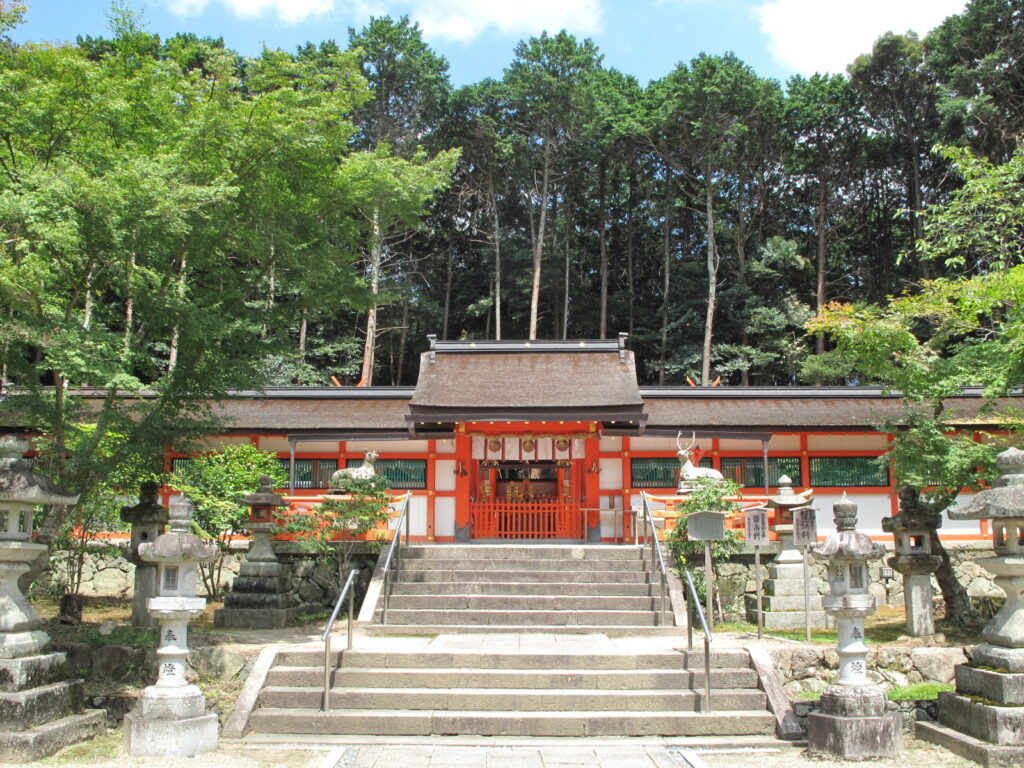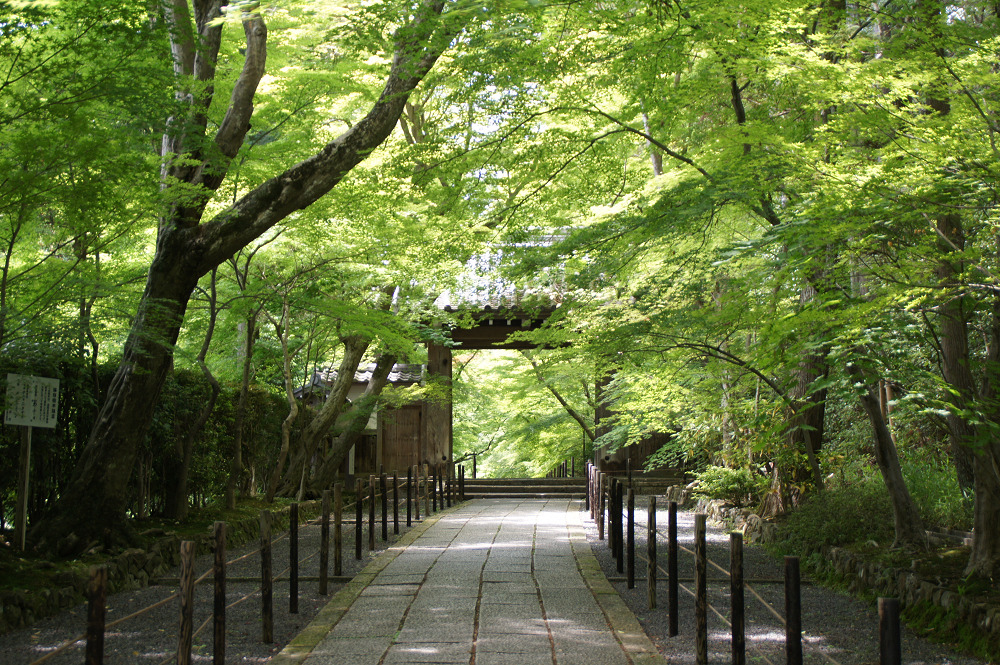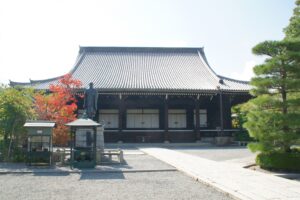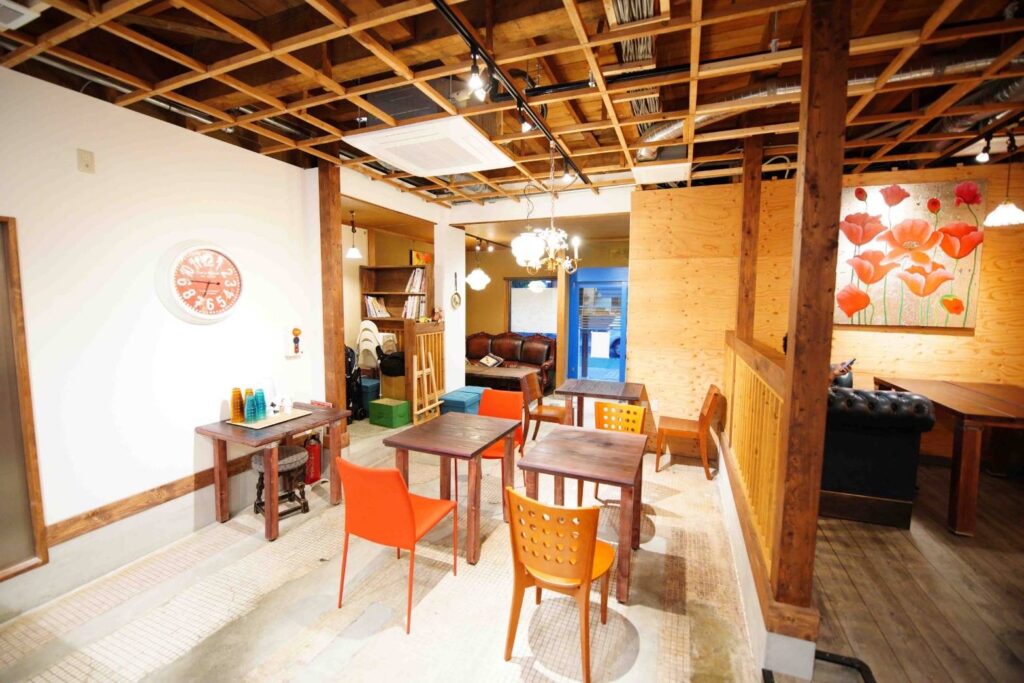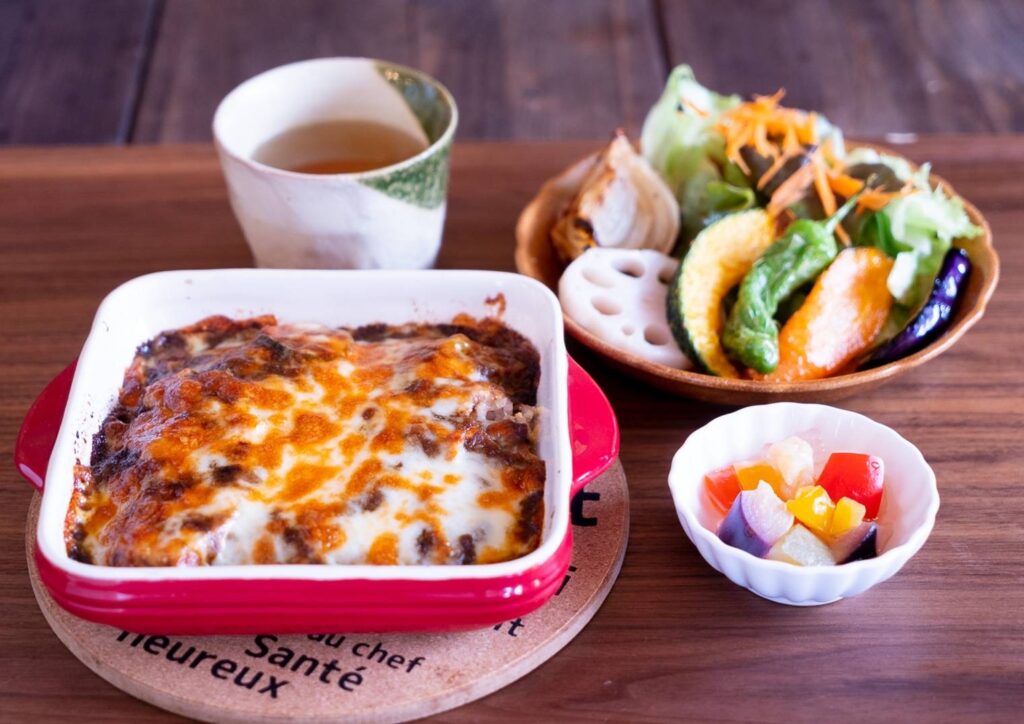Point E Oharano Shrine
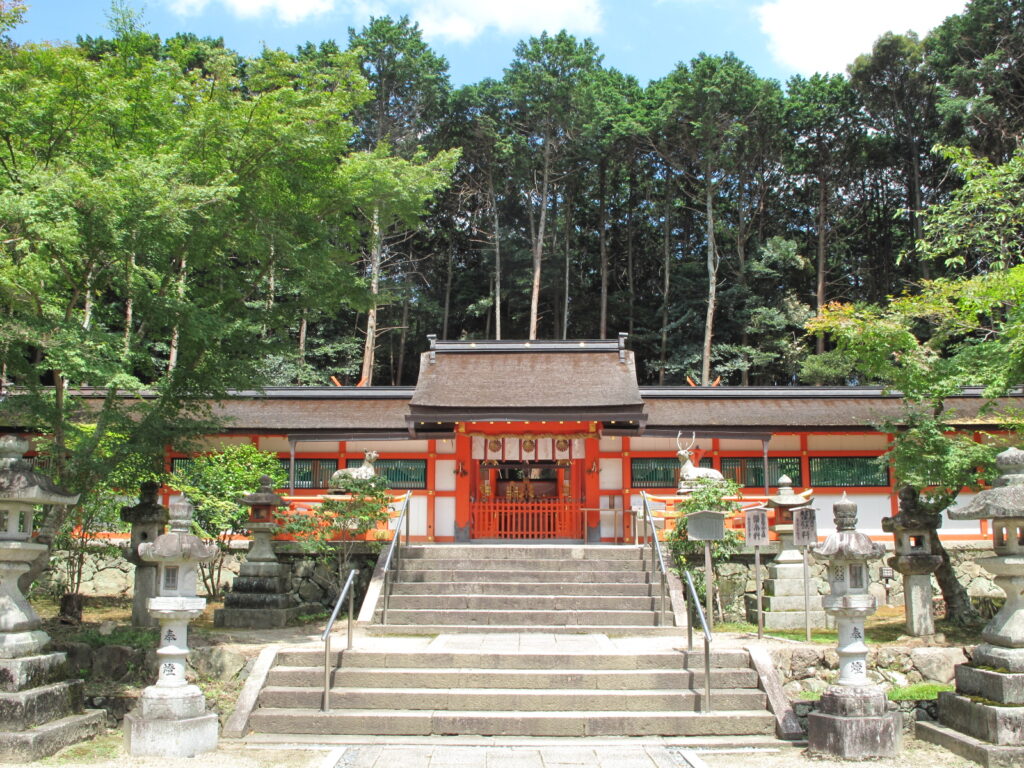
Still following the bamboo trail, head a little further south until you reach a right turn in the path. Follow this west until you pop out on a road called Takenosato hon dori. This stretch of road gives you a real feel for what it’s like to live in Kyoto like a local, with homes dotted along the way and a general buzz of suburban life filling the air.
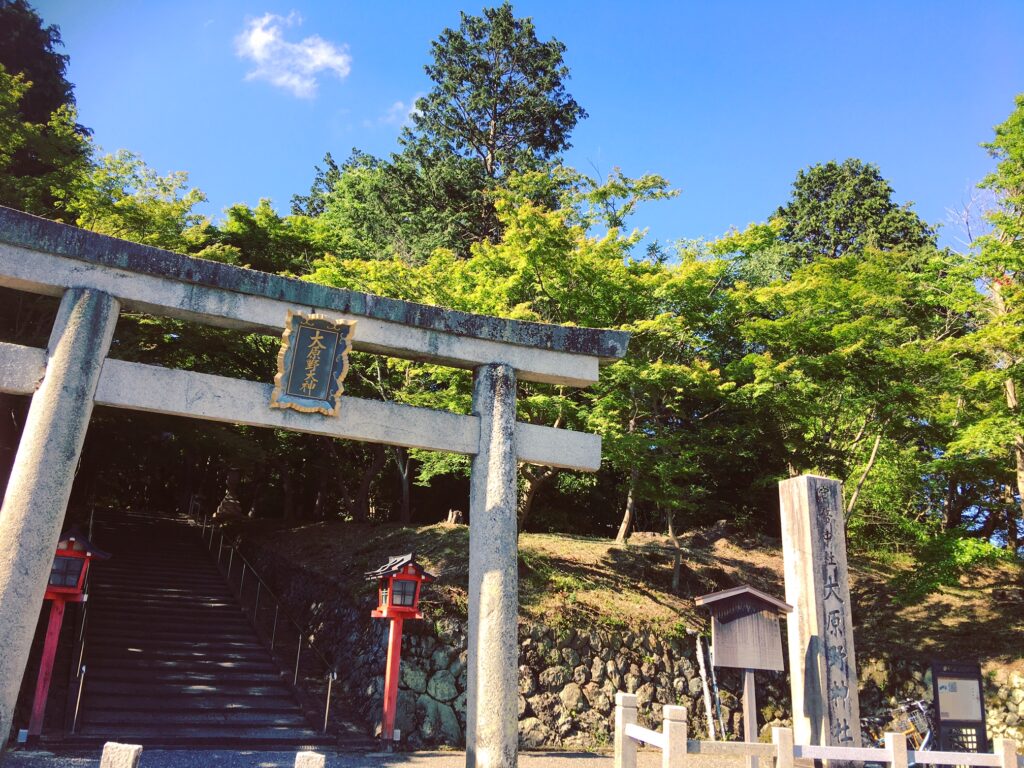
Continue west along Takenosato hon dori about 4 kilometers (2.5 miles) as you make your way to Oharano, a beautiful shrine which was founded around 784. When Emperor Kammu moved the imperial capital from Nara to Nagaoka-kyo in 784, he also transferred the great deities of Nara’s Kasuga Taisha Shrine, deities of the imperial Fujiwara clan, here to Oharano Shrine. For this reason, the shrine is fondly known as “Kyo Kasuga” (as opposed to the Kasuga of Nara). You can spot several deer/deer-god statues in the shrine’s grounds, and omamori charms with a deer motif, as deer are revered at Kasuga Taisha Shrine as messengers of the gods as well.
If you’re ready for lunch at this point, slurp up a bowl of soba at the charming teahouse Sobakiri Kogoro and try its famous mugwort dumplings (yomogi dango) on the side. The teahouse is situated beside the shrine’s scenic pond, so you can soak up the peaceful atmosphere and recharge with nature as you dine.
